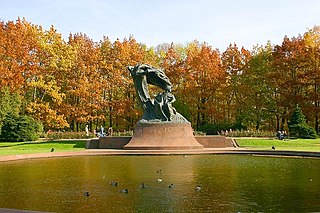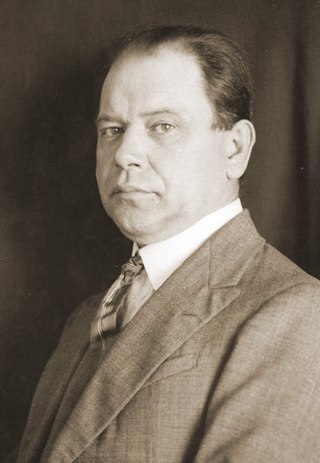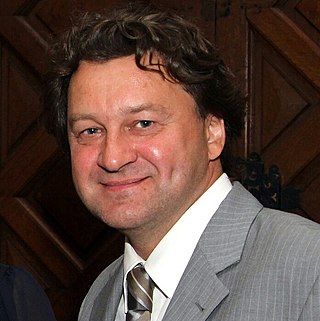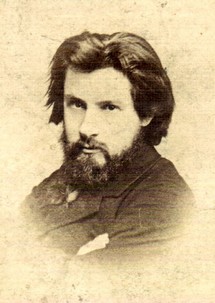This article relies largely or entirely on a single source .(December 2019) |


Jakub Tatarkiewicz (31 March 1798, Warsaw - 3 September 1854, Warsaw) was a Polish sculptor in the Classical style.
This article relies largely or entirely on a single source .(December 2019) |


Jakub Tatarkiewicz (31 March 1798, Warsaw - 3 September 1854, Warsaw) was a Polish sculptor in the Classical style.
He received his primary education in Piarist schools; showing an early talent for music and drawing. From 1817 to 1822, he studied in the Fine Arts Department at the University of Warsaw, where his instructors included Paweł Maliński and Antoni Brodowski. During that time he was awarded a scholarship and two exhibition medals.
From 1823 to 1828, he studied sculpture with Bertel Thorvaldsen in Rome; returning to Warsaw through Switzerland, France and Germany. His first orders for sculptures came from the Grand Theatre and the poet/statesman, Julian Ursyn Niemcewicz, who was an acquaintance of Thorvaldsen.
In 1833, he entered a competition for the post of "Professor of Sculpture" at the Jagiellonian University. He won the competition, but never assumed his post, due to cutbacks related to the recent November Uprising, which nearly resulted in the university's closure. From 1834 to 1840, he taught modeling and drawing at the Institute for the Deaf .
His major statues include "Dying Psyche" at the Grand Theatre, and figures of Stanisław Kostka Potocki and his wife Aleksandra Lubomirska, on the Potocki Mausoleum at Wilanów Palace. Notable among his numerous busts are those of Klementyna Hoffmanowa and Samuel Linde. He also did portrait medallions.
The philosopher and historian, Władysław Tatarkiewicz, was his grandson.
![]() Media related to Jakub Tatarkiewicz at Wikimedia Commons
Media related to Jakub Tatarkiewicz at Wikimedia Commons

Bertel Thorvaldsen was a Danish and Icelandic sculptor and medalist of international fame, who spent most of his life (1797–1838) in Italy. Thorvaldsen was born in Copenhagen into a working-class Danish/Icelandic family, and was accepted to the Royal Danish Academy of Art at the age of eleven. Working part-time with his father, who was a wood carver, Thorvaldsen won many honors and medals at the academy. He was awarded a stipend to travel to Rome and continue his education.

Xawery Dunikowski was a Polish sculptor and artist, notable for surviving Auschwitz concentration camp, and best known for his Neo-Romantic sculptures and Auschwitz-inspired art.

Wilanów Palace is a former royal palace located in the Wilanów district of Warsaw, Poland. It was built between 1677–1696 for King of Poland John III Sobieski according to a design by architect Augustyn Wincenty Locci. Wilanów Palace survived Poland's partitions and both World Wars, and so serves as one of the most remarkable examples of Baroque architecture in the country.

Łazienki Park or Royal Baths Park is the largest park in Warsaw, Poland, occupying 76 hectares of the city center.

Neoclassical architecture in Poland was centered on Warsaw under the reign of Stanisław August Poniatowski, while the modern concept of a single capital city was to some extent inapplicable in the decentralized Polish–Lithuanian Commonwealth. Classicism came to Poland in the 18th century as the result of French infiltrations into the Polish millieu. The best-known architects and artists who worked in Poland were Dominik Merlini, Jan Chrystian Kamsetzer, Szymon Bogumił Zug, Stanisław Zawadzki, Efraim Szreger, Antonio Corazzi, Jakub Kubicki, Hilary Szpilowski, Christian Piotr Aigner, Wawrzyniec Gucewicz, Bonifacy Witkowski and Danish Bertel Thorvaldsen.

Alina Szapocznikow was a Polish sculptor and Holocaust survivor. She produced casts of her and her son's body. She worked mainly in bronze and stone and her provocative work recalled genres such as surrealism, nouveau realism, and pop art.
The history of philosophy in Poland parallels the evolution of philosophy in Europe in general.

Antoni Stanisław Brodowski was a Polish painter in the Classical style.

Mieczysław Jan Ireneusz Lubelski was a Polish monumental sculptor and ceramicist. In Poland he was part of the Poznań-based art movement, Świt, (Dawn). He was the author of many public sculptures and monuments, as well as of Religious art in several Polish cities, many of which did not survive the war. A Holocaust survivor, he was hidden by Catholic clergy in Kielce, took part in the Warsaw Uprising and after captivity in a German POW camp, resumed the final years of his career in the United Kingdom. After World War II he became especially known for the Polish Air Force Memorial in Northolt, and for reinstating some of his shattered work in Communist Poland. He also took on interior ceramic designs for exiled Poles in London.

Józef Jan Gosławski was a Polish sculptor and medallic artist. He was a designer of coins, monuments and medals. Laureate of many artistic competitions; decorated with the Silver Cross of Merit.

Potocki Palace, is a large baroque palace in Warsaw located at Krakowskie Przedmieście Street 15, directly opposite the Presidential Palace. It was originally built for Denhoff family and succeeded by Potocki family in the end of 18th century. After World War II the seat of the Ministry of Culture and Art. Nowadays - the Ministry of Culture and National Heritage.

Władysław Skoczylas was a Polish watercolorist, woodcutter, sculptor and art teacher.

Carl Johann Steinhäuser was a noted German sculptor in the classical style.

Antoni Popiel was a Polish sculptor.

Paweł Maliński (1790-1853) was a Czech-born sculptor and mason who lived and worked in Poland.

Jan Chryzostom Redler, also Johann Chrysostomus Redler, was a Polish sculptor. His exact date of birth or death is not known. He worked mainly in Warsaw and Białystok.

Jakub Fontana was a Polish architect of Swiss Italian origin, a practitioner of the Baroque and Neoclassical styles. He was court architect to the Polish king. He was knighted in 1764. Jakub Fontana had a notable brother named Jan Kanty Fontana. His projects were influenced by Saxon Baroque, French Rococo and early Neoclassicism.

Giennadij Jerszow is a Polish–Ukrainian sculptor, jewelry designer and art teacher. He is a member of the National Union of Artists of Ukraine, and the National Association of Polish Artists and Designers. He is known for the production of monumental works, easel compositions and portraits, represented in different countries.
Jakub Ciężki was born in 1979 in Lublin, Poland. He graduated from the Faculty of Arts at the Maria Curie-Skłodowska University in Lublin, in 2003; He was granted an honors degree in the painting atelier of Prof. Jacek Wojciechowski. Ciężki is a painter fascinated with street furniture along with realistic abstractions. He is attracted by the industrial landscape.

Parys Filippi was a Polish sculptor. His father was an Italian sculptor and stuccoist named Paolo Filippi.